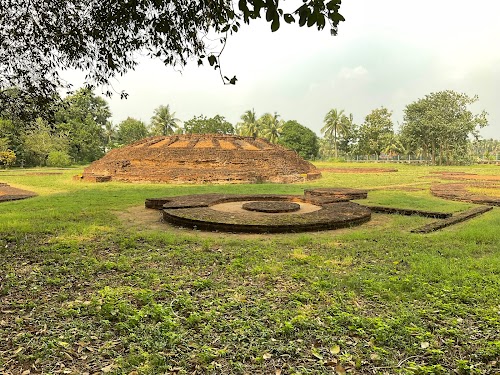
Adurru Buddha Stupa
Kakinada, India
- Enjoy the peaceful and serene environment.
- Explore the stupa ruins and architecture.
- Learn about Buddhist history and philosophy.
- Photography of the historical site.
Known for:
Description:
The Adurru Buddha Stupa, located near Kakinada, is a significant Buddhist archaeological site that offers a glimpse into the region's rich Buddhist past. The stupa, dating back to the 2nd-1st century BCE, is a partially excavated circular structure with a central platform. The site features remnants of monastic complexes, including chaityas (prayer halls) and viharas (monasteries), showcasing the flourishing Buddhist community that once thrived here. Visitors can explore the ruins, imagining the lives of the monks and devotees who once walked these grounds. The serene atmosphere and historical significance make Adurru a captivating destination for history buffs, archaeology enthusiasts, and those seeking a peaceful retreat. Don't miss the chance to connect with India's ancient heritage at this remarkable site.
History:
The Adurru Buddha Stupa is believed to have been constructed during the Satavahana period, a time of great Buddhist influence in Andhra Pradesh. The site served as an important center for Buddhist learning and practice for several centuries. Archaeological excavations have revealed various artifacts, including pottery, beads, and inscriptions, providing valuable insights into the daily life and religious beliefs of the people who inhabited the monastery. The stupa itself underwent several phases of construction and renovation, reflecting the evolving needs of the community. Over time, the site was abandoned and gradually fell into disrepair. It was rediscovered in the 20th century, and subsequent excavations have helped to uncover its historical significance, making it a valuable heritage site.